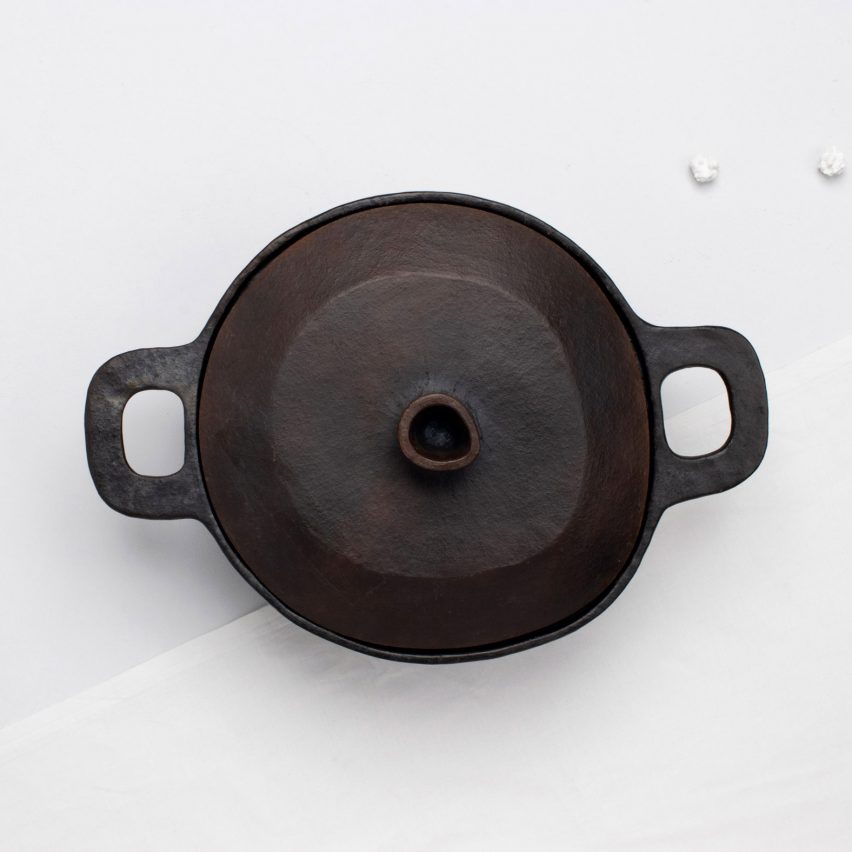
Product design studio Tiipoi has worked with Indian master craftsman Mathew Sasa to create a collection of ceramic vessels using a technique found in a remote village in northeastern India.
The five-piece cookware collection consists of two multipurpose pots and a pan, and two serving bowls that nest one within the other, called Karipot, Karipan and Karibowl.
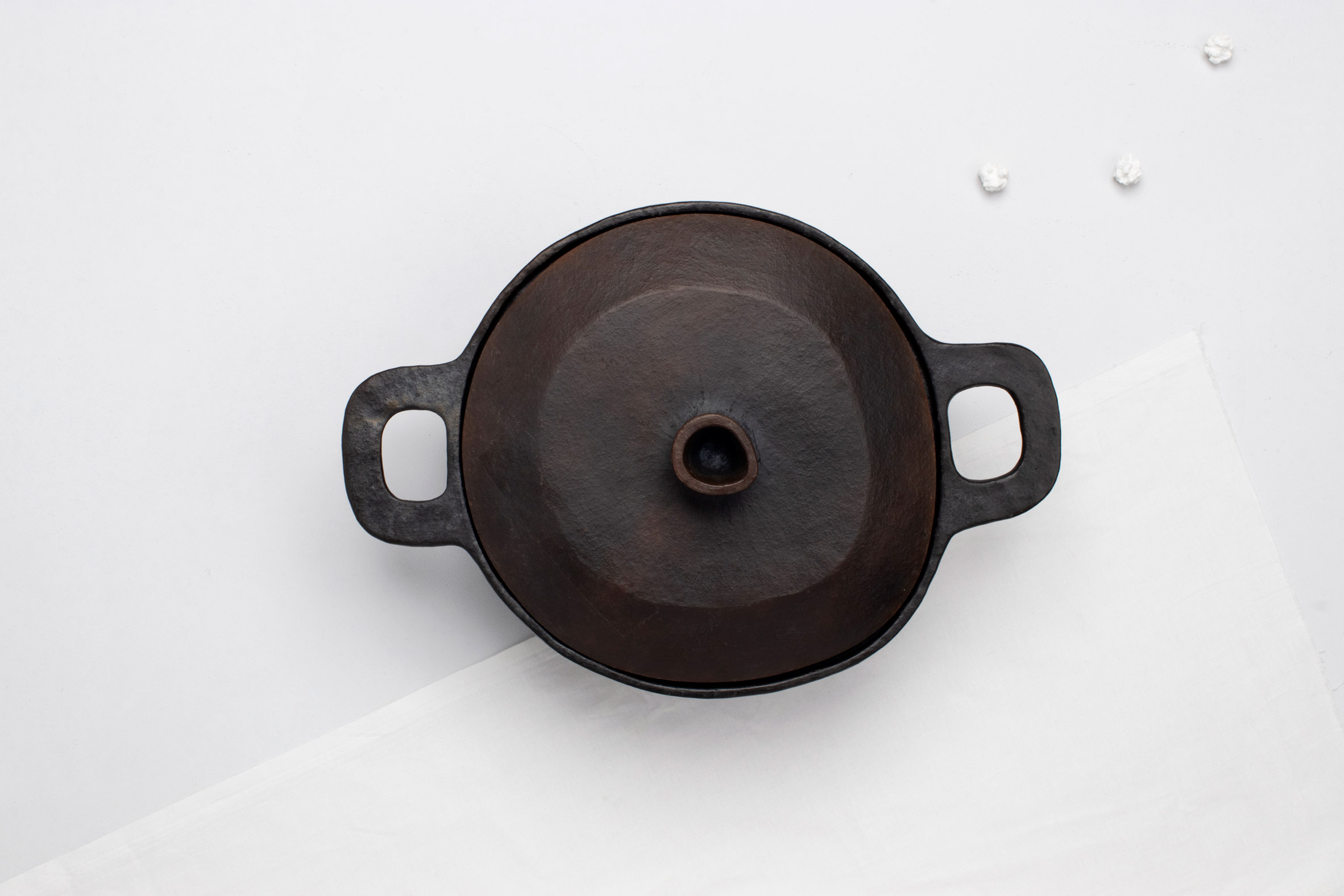
Tiipoi, which has studios in London and Bangalore, worked with ceramicist Mathew Sasa who comes from the Manipur region in northeastern India, to create the range.
The area is famous for its unique black ceramics that hail from the village of Longpi, which sits on the disputed border between the states of Nagaland and Manipur.
The material is made from a locally found "serpentine" stone and clay dredged from the Shungvi Kong river, mixed in equal parts with water.
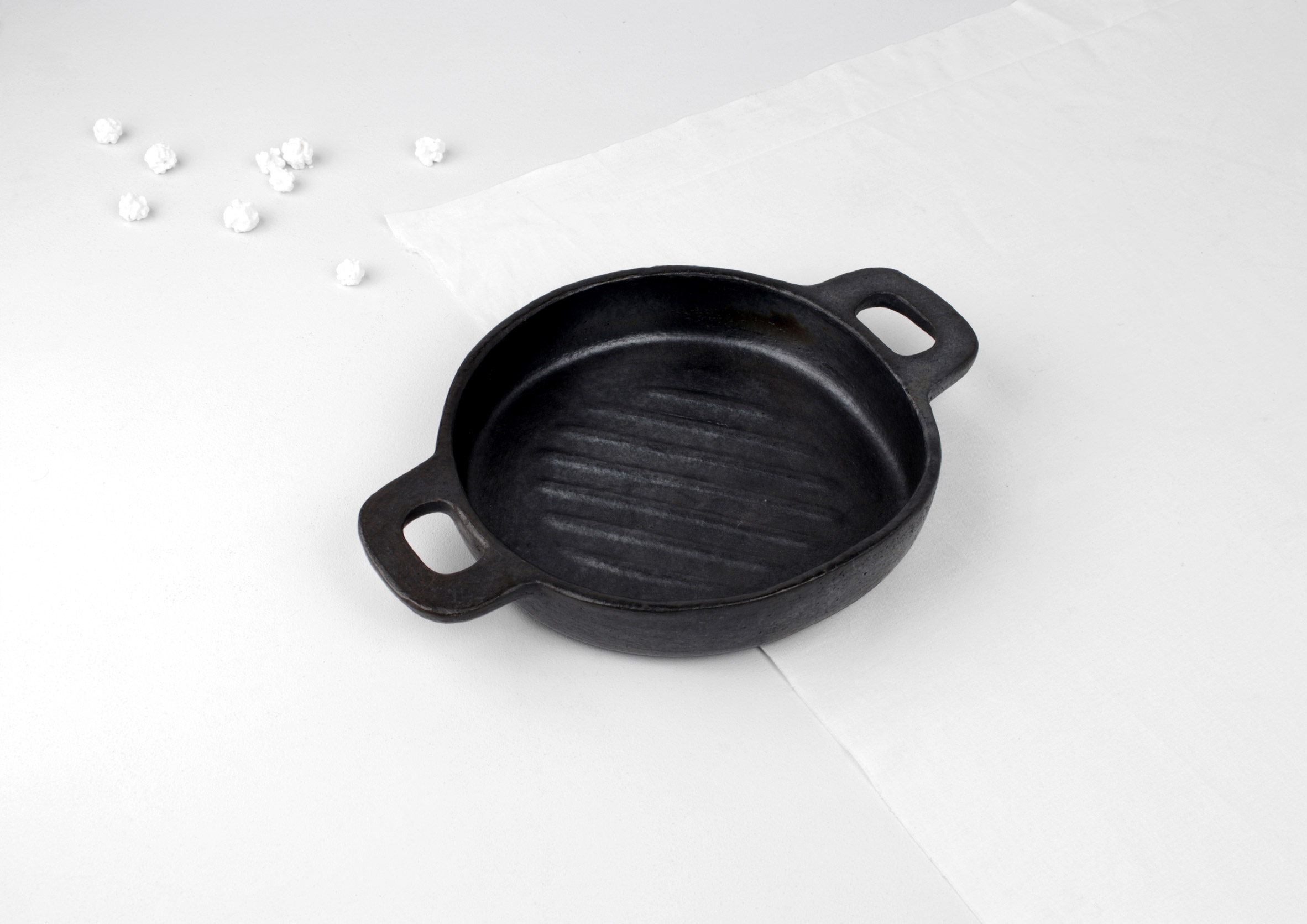
In Longpi, this mixture would typically have been shaped by hand over a plaster mould, but Tiipoi and Sasa modified the process by 3D-printing the moulds, to allow for a precise shape and a greater element of detail.
The Tiipoi ceramics are made by hand, dried in the sun, then fired at low temperatures without any glazes. The fact that they are left unglazed means that the pots are completely biodegradable, according to the brand.
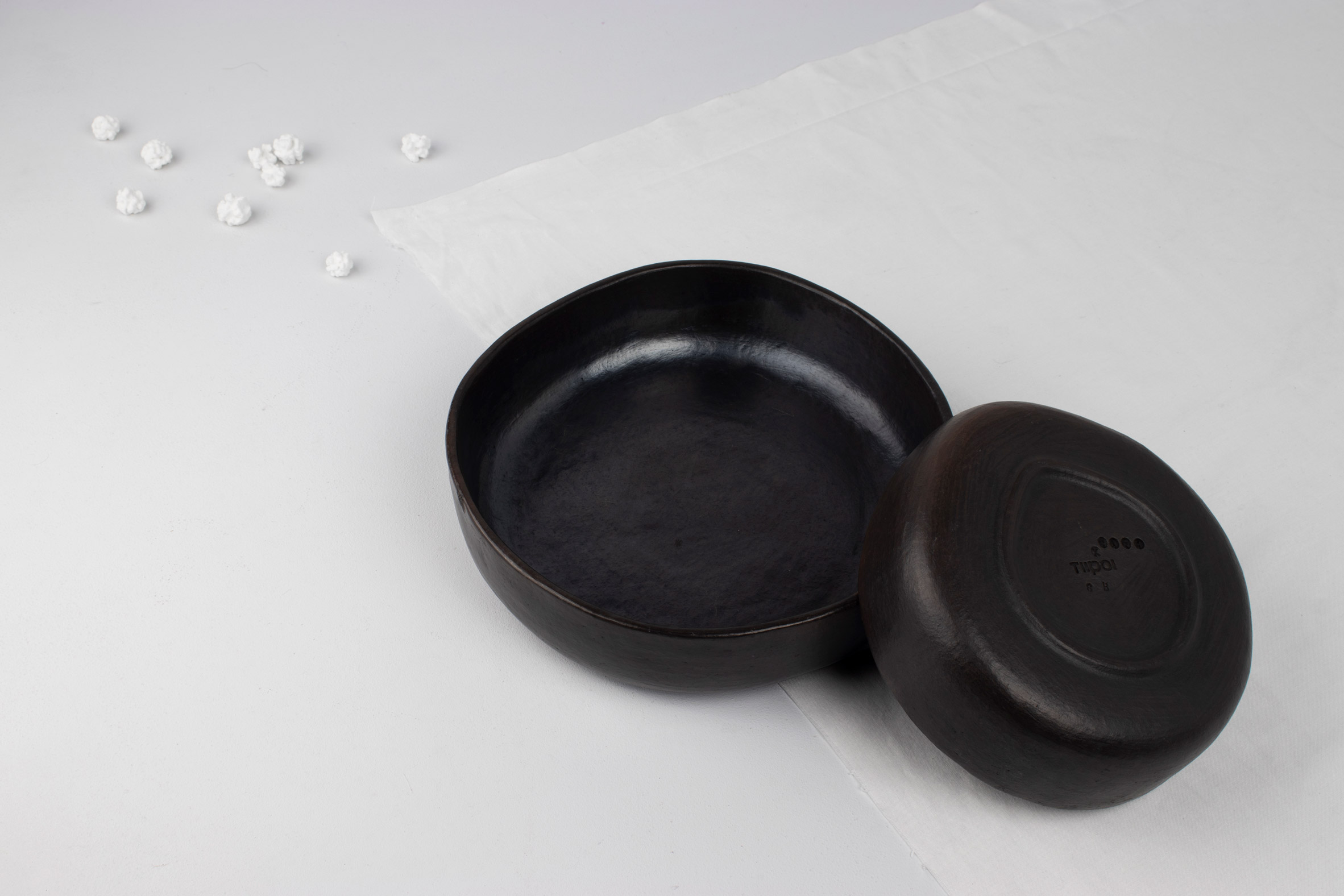
"Now more than ever, it is important to rethink our collective relationship with materials and question the notion of a 'good' material," said founder and creative director of Tiipoi, Spandana Gopal.
"In my view, indestructibility is not necessarily synonymous with good; for me, the fragility and the seeming imperfections of Longpi are very human," she continued.
"More importantly, its inherent natural properties like being able to withstand high temperatures and not requiring a glaze, make it the perfect cooking material. The fact that the cookware is made from a single material, and is entirely biodegradable, truly proves it to be environmentally sustainable."
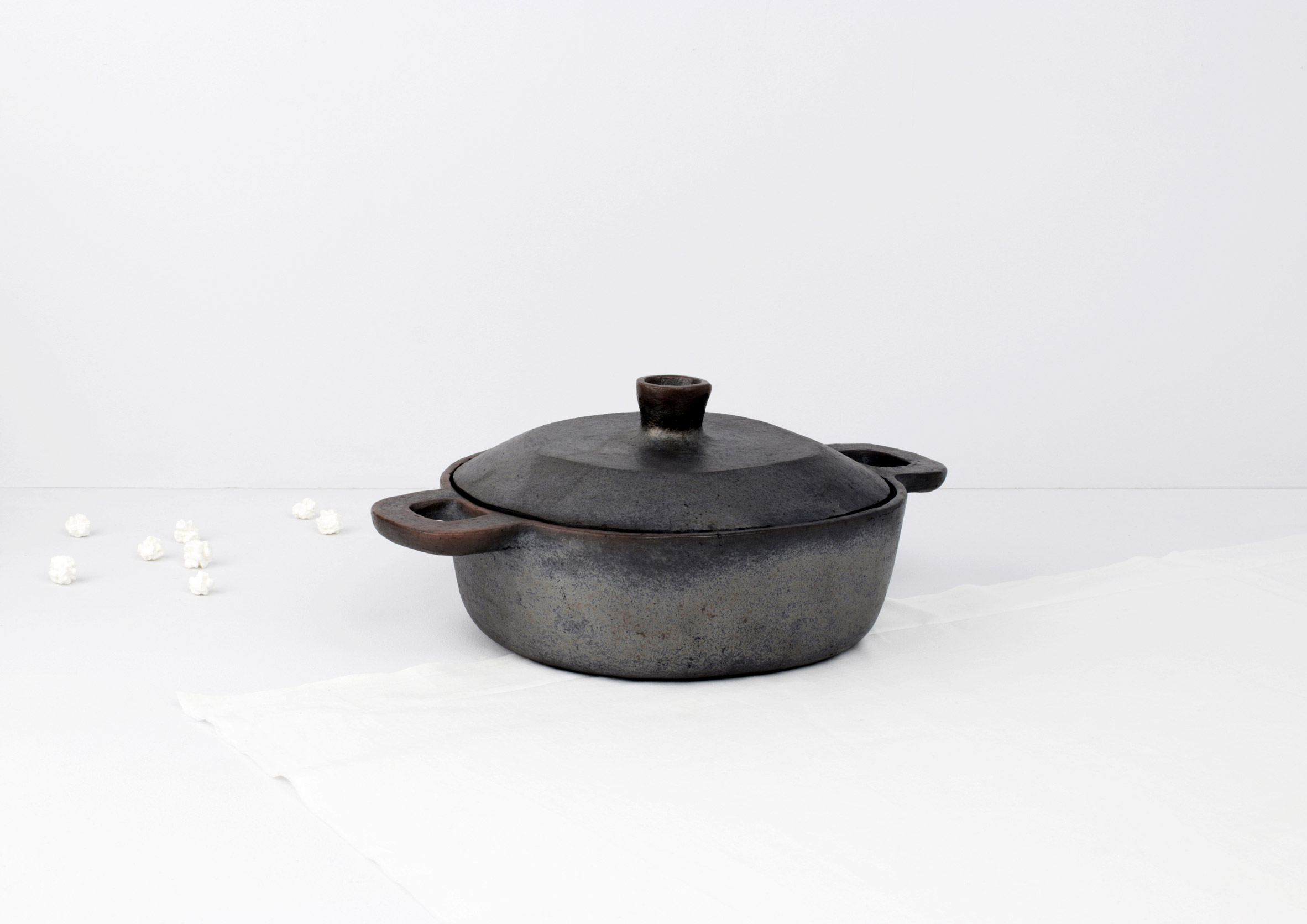
Traditionally the pots would have been fired in an open bonfire and smoked in sawdust made from local leaves to complete the production process.
Both the small and large Karipot come with a lid, complete with round handle, and have two chunky handles to make them easy to lift in and out of an oven.
The Karipan has raised indents like a griddle pan, whilst the pair of nestling bowls can be stacked one inside the other for ease of storage.
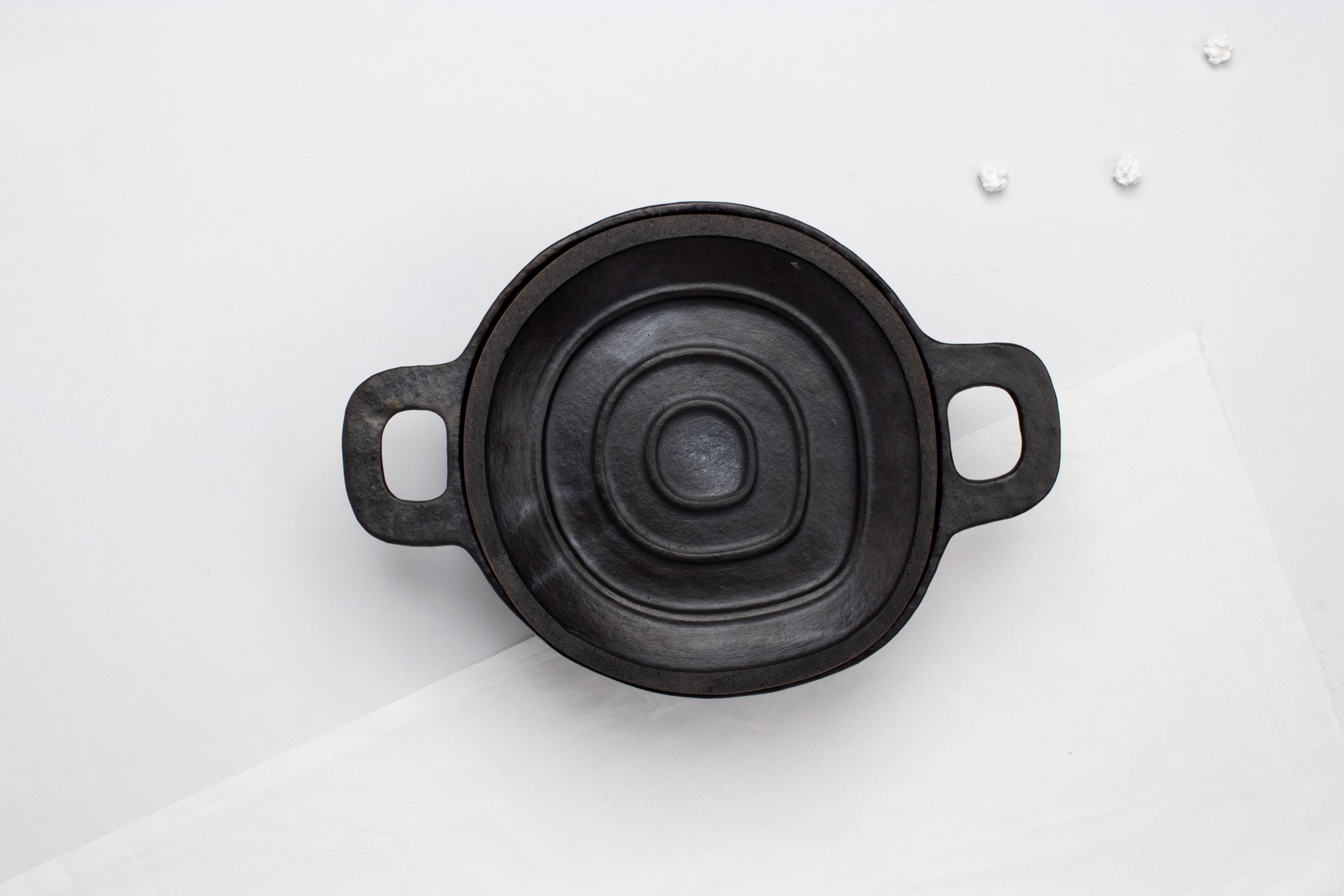
"The Longpi collection seeks to reclaim the tokenisation of handcrafted souvenirs and re-establish them as functional objects for the modern home," said Gopal.
"Doing this, we have also intervened to help Matthew establish production systems that upscale his process, making his craft more relevant for the modern industry."
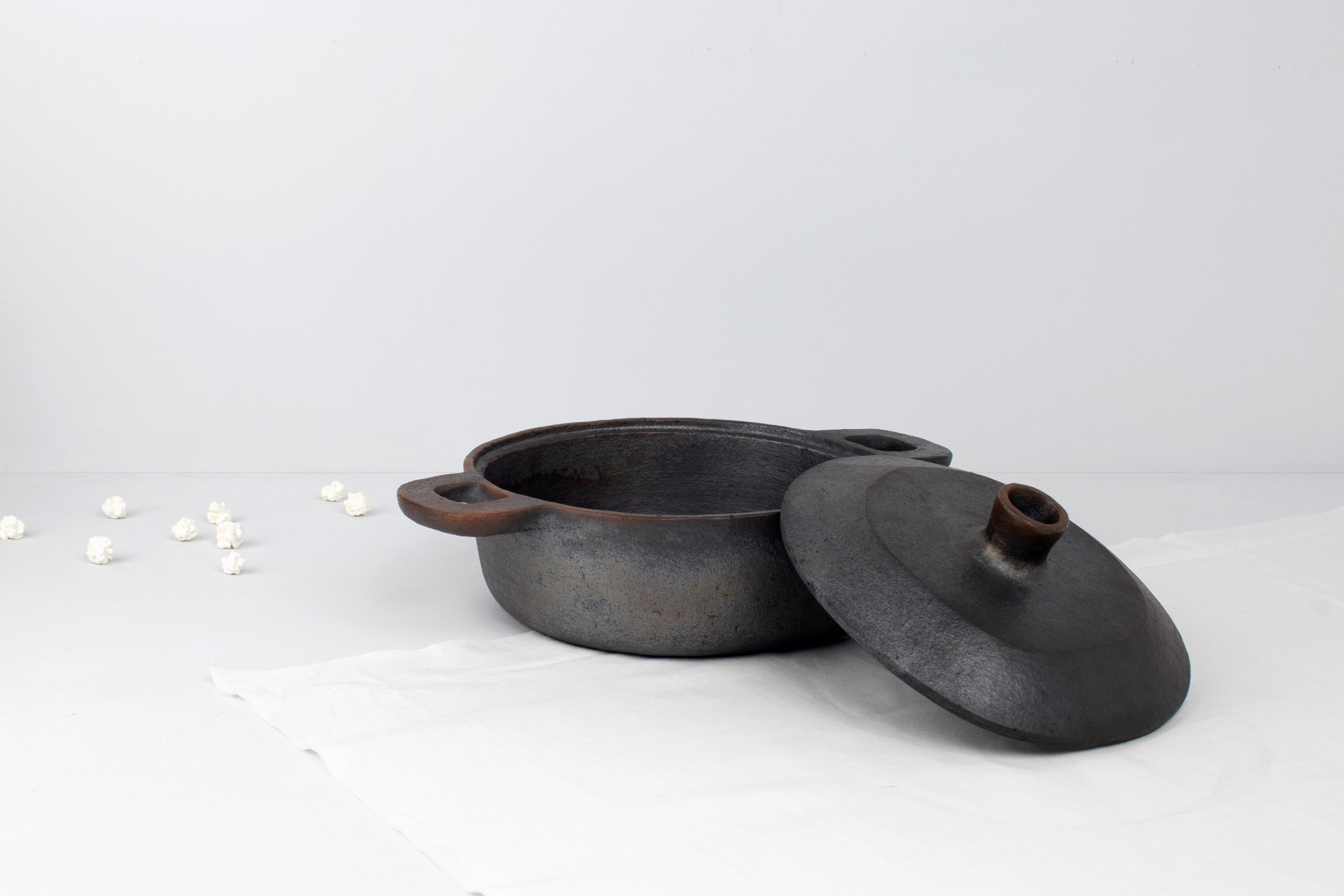
Other studios working with ceramics to make kitchenware include Granby Workshop, whose plates and bowls are made from industrial clay waste that would otherwise be sent to landfill and Zhekai Zhang whose Coffire lamps were made with porcelain stained using coffee.
The post Tiipoi creates ceramic kitchenware using technique from remote Indian village appeared first on Dezeen.
from Dezeen https://ift.tt/35U8Kym
No comments:
Post a Comment